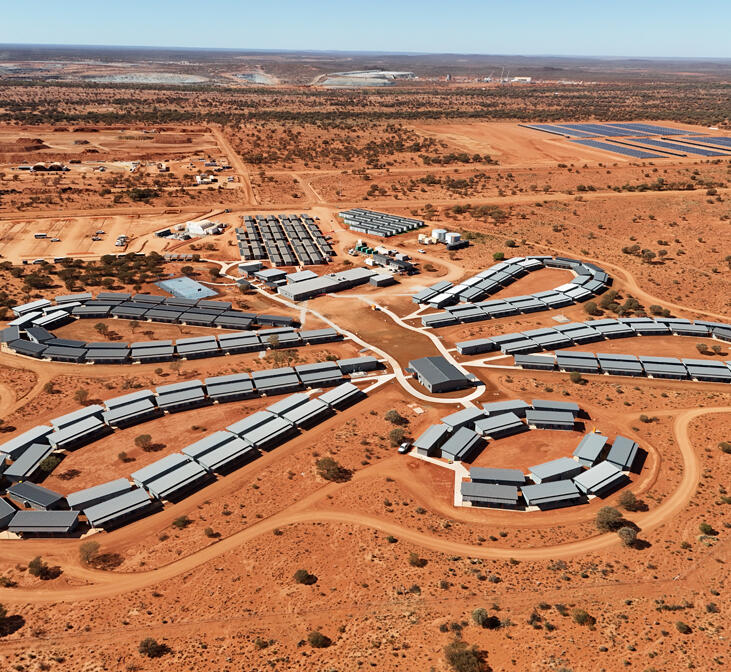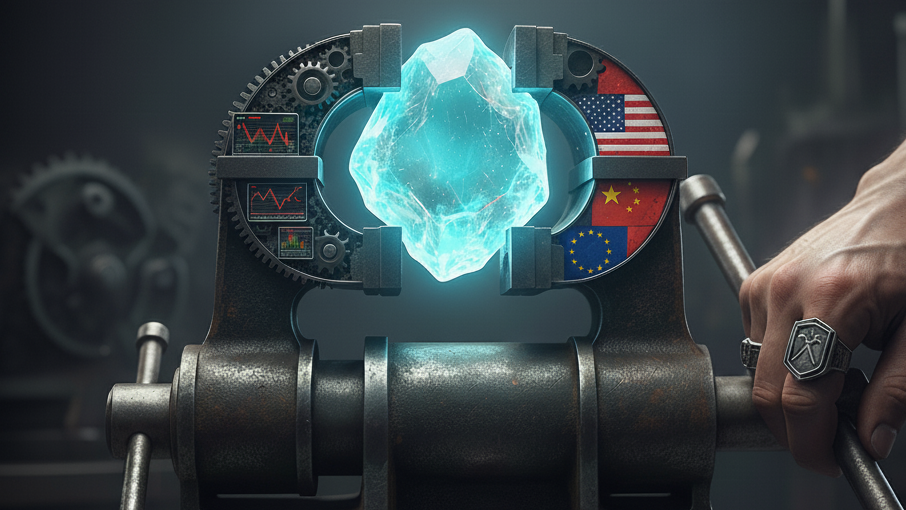If you are holding onto lithium equities hoping for a repeat of the 2022 glory days - it’s time to reset your expectations. For anyone asking, "Is the lithium bull market back?" - the answer, as of right now, is an emphatic, bruising no. Yet fear not. What drove the lithium price in the past has now matured.
Azzet’s Mission Critical is a weekly column that lays out the ebbs and flows around the critical minerals supply chains - from pricing, production, refinement and mergers & acquisitions, to manufacturing and consumer products.
After peaking at over US$80,000 per tonne (t) a couple of years ago in a speculative bull market, battery-grade lithium carbonate is now trading at cyclical lows.
Data from the Shanghai Metals Market shows prices hovering around $10,800/t - and that's an improvement over the past few months - with lithium hydroxide at ~$9,400/t.
This pricing environment is not the result of failing demand - but of a supply glut. Analysts estimate the global surplus at 150,000-175,000t of lithium carbonate equivalent (LCE) this year.
The lithium market is no longer being driven by speculation - it's been redefined by three new fundamentals:
- Operational efficiency (a company's position on the cost curve)
- Geopolitical alignment (US v China)
- State control (resource nationalism)
Let's look at how they work…
Supply and demand
The downstream EV sector remains a source of robust growth.
A PwC review of Q3 2025 EV sales shows global Battery Electric Vehicle (BEV) sales grew 35% year-over-year. BEVs now account for 21% of all vehicles sold globally.
- China: BEV sales +36% (34% market share)
- Europe: BEV sales +32%
- USA: BEV sales +22% (10% market share)
This disconnect - strong demand versus low prices - is explained by the wave of new production, financed during the 2022 price spike, which is now being commissioned and ramped up, saturating the market for chemical and spodumene feedstock.
From growth to opex
For established producers, the focus has pivoted entirely from growth-at-any-cost to aggressive operational cost control.
Albemarle (NYSE: ALB), a key industry bellwether, reported Q3 2025 results that beat analyst estimates. This performance was not driven by price, but by internal efficiency.
The company is on track to realise $450 million in productivity gains this year and is now guiding its own financials based on an average 2025 lithium price of just $9,500/t. Morningstar notes Albemarle's low-cost profile is what allows it to navigate the pricing downturn.
A similar story is unfolding in Western Australia. Pilbara Minerals (ASX: PLS) saw its Q1 2025 revenue increase 19.5% on a production increase of just 2.1%.
The driver was a 10.9% reduction in unit operating costs (opex) to A$540 per tonne of spodumene concentrate.
While incumbents focus on costs, newly financed projects continue to add tonnes to the market.
In July, Liontown Resources (ASX: LTR) officially opened its Kathleen Valley operation in Western Australia. This is a significant, Tier-1 asset that is now ramping up production, with its output bound for offtake partners including Tesla (NASDAQ: TSLA), Ford (NYSE: F), and LG Energy Solution.
Across to Brazil, Sigma Lithium (NASDAQ: SGML) is already producing at a rate of ~270,000 tonnes per annum (tpa) from its Grota do Cirilo operation. The company is now constructing a second plant to double its capacity to ~520,000 tpa.

Lithium tech
Beyond the current ramp-up, the market is also pricing in a pipeline of future projects centred on new technologies and geopolitical alignment.
Direct Lithium Extraction (DLE) - a suite of technologies designed to extract lithium from brines far more efficiently than traditional evaporation - is moving closer to commercial reality.
In Germany, Vulcan Energy Resources (ASX: VUL) is advancing its "Zero Carbon Lithium" project, which uses geothermal brines. In September, the company secured a permit to build its commercial lithium plant, a critical step toward creating a domestic European supply chain.
In North America, the focus is on developing Western-aligned hard-rock assets. Patriot Battery Metals (TSX: PMET / ASX: PMT) is advancing its Corvette project in Quebec, which it bills as the largest hard-rock lithium deposit in the Americas. With a key Feasibility Study lodged in Q3 and a strategic partnership with Volkswagen, the project is central to North America's supply chain ambitions.
Midstream a battleground
The midstream - where lithium feedstock is converted into battery-grade chemicals - has become a clear geopolitical battleground.
Three blocs are now in direct competition:
- The United States: The Inflation Reduction Act (IRA) and its "foreign entity of concern" (FEOC) rules are explicitly designed to build a non-Chinese battery supply chain.
- China: Beijing is responding to this pressure. It announced new export controls on battery technology - not to be confused with the relaxing of exports of rare earths and other critical minerals - which took effect on 8 November, signalling its continued dominance in chemical processing.
- Europe: The EU is attempting to build its own independent supply chain. Policymakers are scheduled to meet in Brussels for Raw Materials Week to discuss the implementation of its Critical Raw Materials Act (CRMA).
Resource nationalism gathers pace
Alongside the supply glut, producers must now contend with rising resource nationalism.
In Chile, which holds the world's largest lithium reserves, a new Codelco-SQM partnership is set to begin in 2025. This joint venture will see state-owned Codelco take majority control of SQM’s (NYSE: SQM) Salar de Atacama operations from 2030.
Critically, Chile is also finalising new extraction contracts that introduce a "dynamic royalty" structure, linking the government's take directly to the fluctuating price of lithium.
Establishing a new price floor
The analyst consensus is for prices to remain under pressure.
Goldman Sachs maintains its bearish outlook, predicting in September that prices could fall to an average of $8,900/t in 2026. The bank believes this is the price required to force supply discipline and cancel enough marginal projects to rebalance the market.
A more moderate view, shared by S&P Global and Morningstar, is for continued softness through 2025, with a potential recovery in 2026 as demand eventually absorbs the current surplus.



